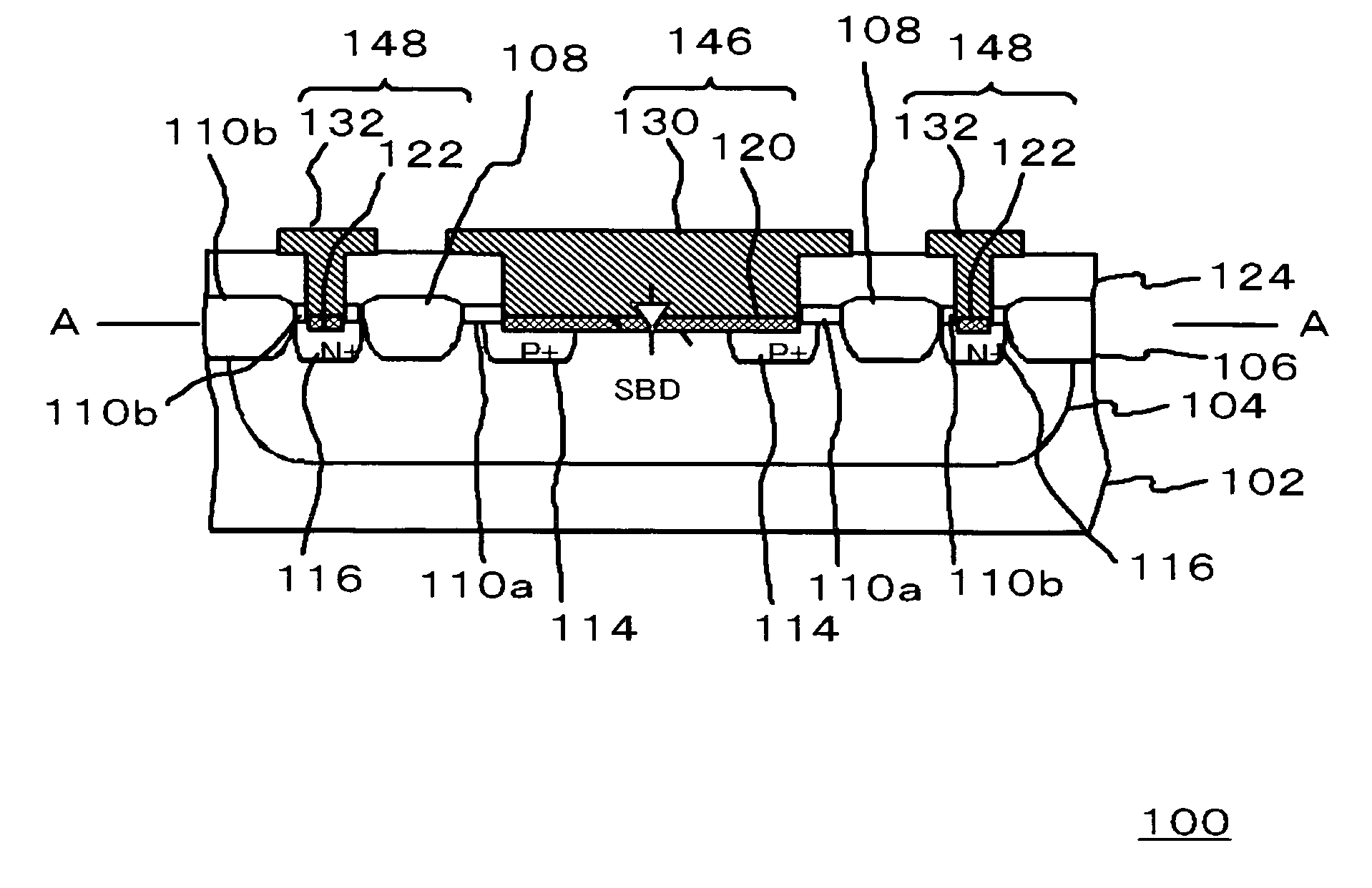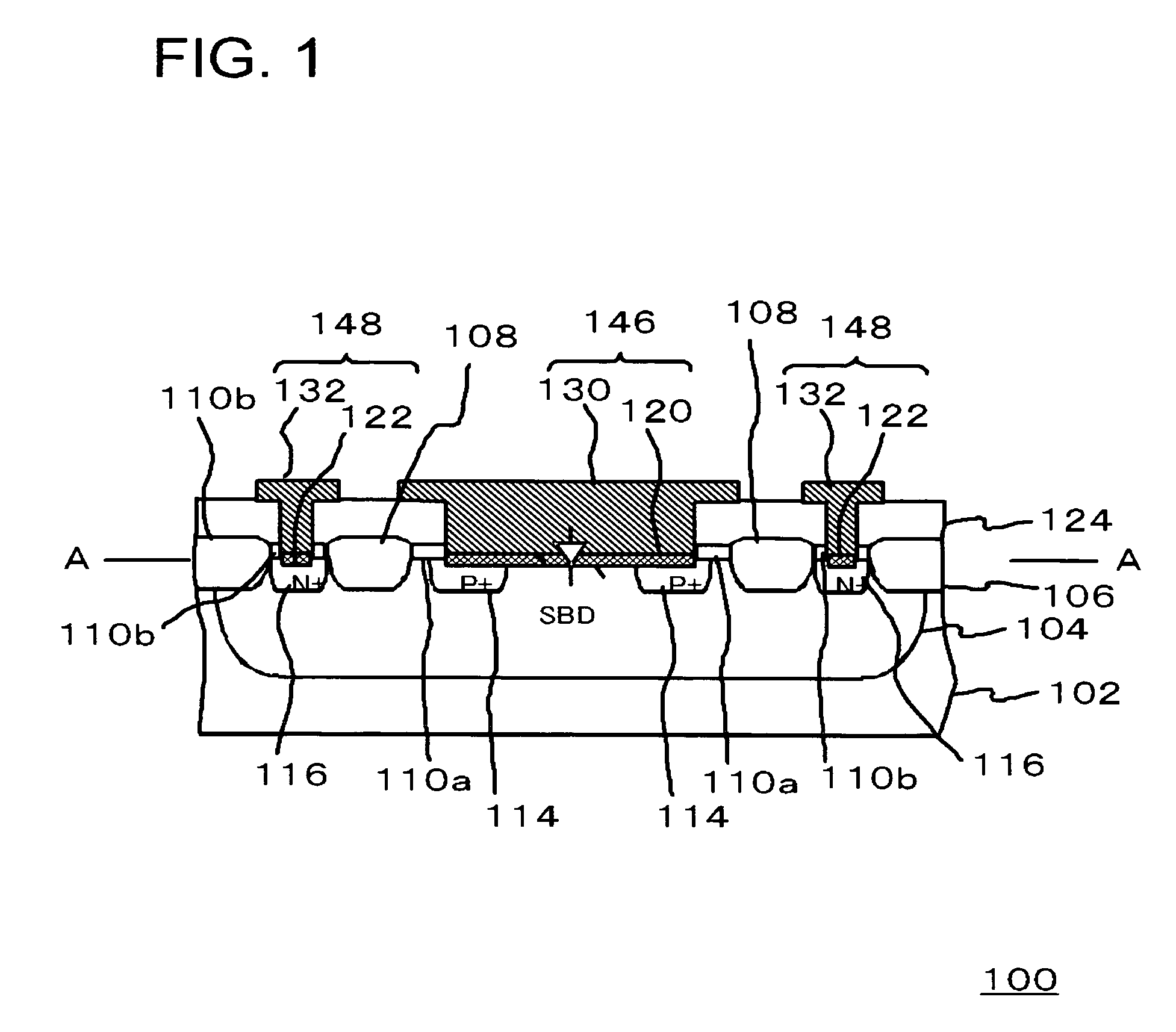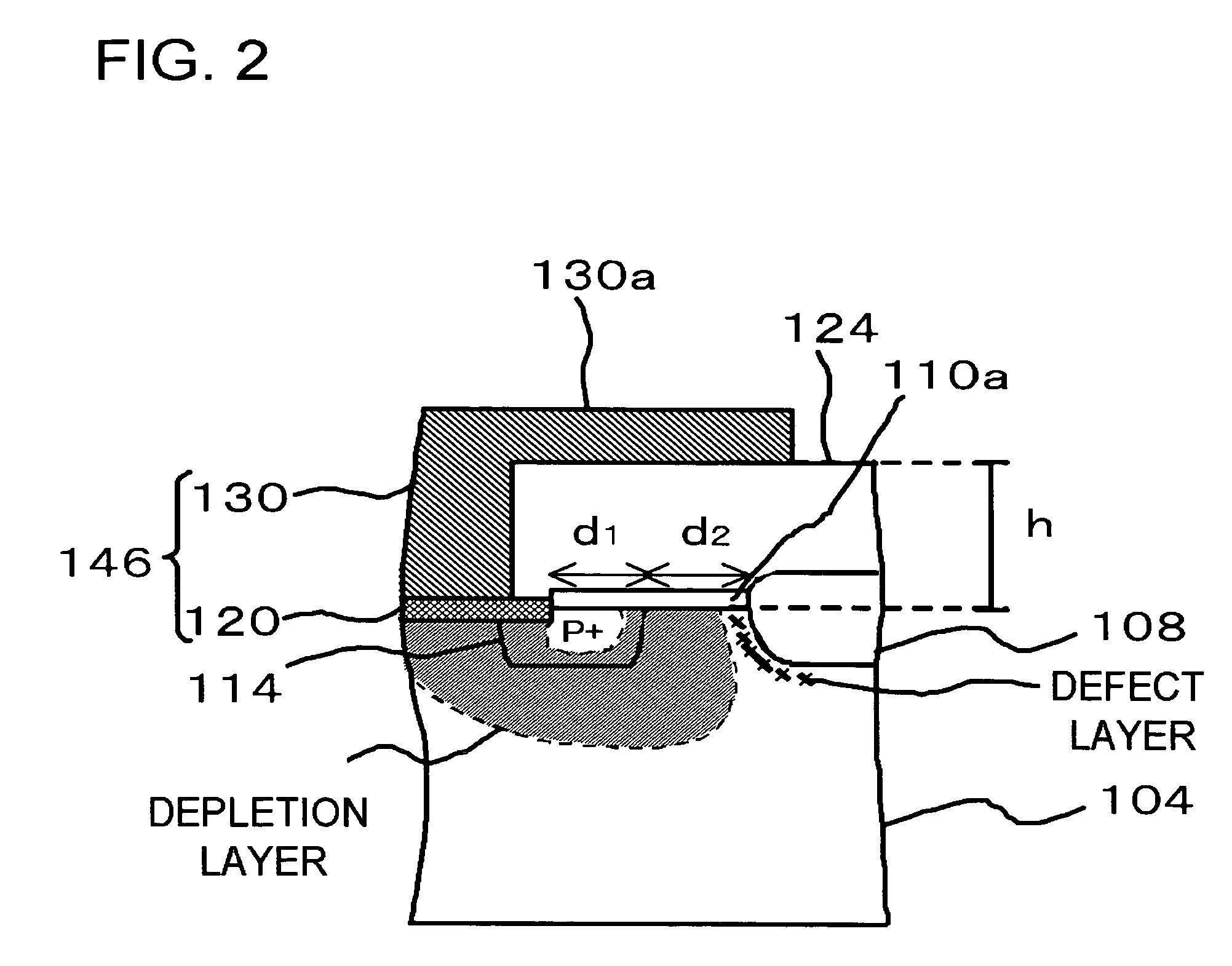Semiconductor device and method of fabricating the same
a semiconductor device and semiconductor technology, applied in the field of semiconductor devices, can solve the problems of inhibiting the downsizing of semiconductor devices, widening the distance between electrodes, and worsening the forward current efficiency, so as to suppress the reverse leakage current
- Summary
- Abstract
- Description
- Claims
- Application Information
AI Technical Summary
Benefits of technology
Problems solved by technology
Method used
Image
Examples
first embodiment
[0030]FIG. 1 is a sectional view showing a configuration of a semiconductor device of this embodiment.
[0031] A semiconductor device 100 has a semiconductor substrate 102 having a first-conductivity-type semiconductor region 104 (first-conductivity-type region) formed in the surficial portion thereof; an anode 146 (metal electrode) of a Schottky barrier diode formed on the first-conductivity-type semiconductor region 104; a second-conductivity-type guard ring 114 formed along the periphery of the anode 146 in the surficial portion of the first-conductivity-type semiconductor region 104, and; an isolation insulating film 108 formed along the periphery of, and being spaced from, the guard ring 114 in the surficial portion of the first-conductivity-type semiconductor region 104, so as to isolate the anode 146 from the other regions; and an anode-forming mask 110a covering the surface of the semiconductor substrate in a portion fallen between the anode 146 and the isolation insulating f...
second embodiment
[0064] This embodiment differs from the first embodiment in the configuration of the anode 146 and the cathode 148.
[0065]FIGS. 8A to 9B are sectional views showing process steps of fabricating a semiconductor device of this embodiment.
[0066] First, a structure configured as shown in FIG. 4B is formed according to the similar procedures as described in the first embodiment referring to FIGS. 4A and 4B. Next, the guard ring 114, which is a P+ layer, and the contact region 116, which is an N+ layer, are respectively formed by a photoresist process and ion implantation (FIG. 8A). The guard ring 114 herein is formed so as to ensure the above-described distance d2 between the outer end portion thereof and the end potion of the isolation insulating film 108, as described in the first embodiment. The guard ring 114 is formed also so as to allow the end portion of the anode-forming mask 110a to fall thereon. In other words, as shown in FIG. 2, the guard ring 114 is formed so as to overlap ...
PUM
 Login to View More
Login to View More Abstract
Description
Claims
Application Information
 Login to View More
Login to View More - R&D
- Intellectual Property
- Life Sciences
- Materials
- Tech Scout
- Unparalleled Data Quality
- Higher Quality Content
- 60% Fewer Hallucinations
Browse by: Latest US Patents, China's latest patents, Technical Efficacy Thesaurus, Application Domain, Technology Topic, Popular Technical Reports.
© 2025 PatSnap. All rights reserved.Legal|Privacy policy|Modern Slavery Act Transparency Statement|Sitemap|About US| Contact US: help@patsnap.com



